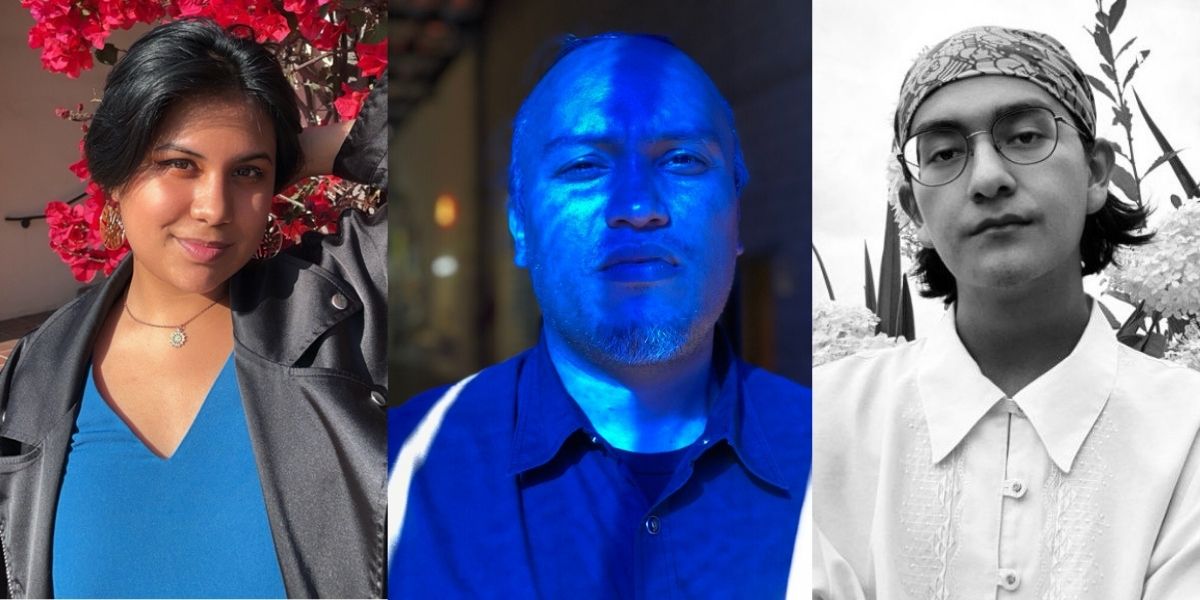Once we entered the student roundtable, we felt welcomed by the casualness of the space. It is hard to come by school-organized events that center student-faculty discussion and communication, however, here we were able to talk freely. Similarly, it’s not common to see Brown, Latine, Chicano students in ArtCenter, let alone four of us staring at one another through digital boxes. It was intimidating at first, taken aback from one keyboard click to the next, we would be greeting ourselves to the community we’ve been seeking for three years now. Here, we would get to know our peers and their work better.
We’ve gotten used to the routine of small introductions in roundtable discussions, yet it looked and felt new this time. Half of us are lower term, and the other half upper term, we realized we immediately felt a connection for love through community, love through art. Joel had a small presentation, reiterating every couple of slides how he would love to have conversations with us afterward. He began with the history and rich influence of Chicano Art, the intersectionality of individuals within that movement and culture. What seems so close in iconography, language, tradition, these Chicano Artists and Activists were part of something unique to Los Angeles and U.S History. The images were bold in color and typography, loud in personality and narrative. We wrote down the names he emphasized: Barbara Carasco, Esther Hernandez, Yreina Cervantes and the ASCO Collective. While looking at Joel Garcia’s career, we also understood that much of the things that we have created aspire to have the same force, drive and audience that Joel is involved in. As people with indigenous roots, hearing his experience brought us closer to feeling in a place of community, where our identity matters. Something we had felt somewhat lost in doing since we had not yet found mentors with the same vision at Art Center.
Afterwards, he illustrated a powerful project he was part of. There were photographs of descendants of Tongva, Chumash, and Tataviam Tribes toppling a Father Junípero Serra statue in Father Serra Park. The symbolic and spiritual action of taking down a leader who represented colonialism, racism and violence was moving to observe. Joel highlights the healing that began to uproot where that dense bronze once stood.
As his talk is dwindling down, we are invited to share our thoughts. One by one we thank him for his time and express our opinions on what we’ve heard. All of us are delighted to have new resources, organizations, artists and friends to support.
